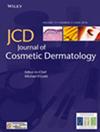Transdermal Delivery of Baicalin Based on Bio-Vesicles and Its Efficacy in Antiaging of the Skin
Abstract
Objective
To develop a stable and efficient delivery system for baicalin, a flavonoid with potential antioxidant and antiaging properties, to overcome its limitations in solubility, stability, and skin permeability.
Methods
Baicalin was encapsulated using ATP synthase molecular motor technology into bio-vesicles derived from yeast/bacillus cell membranes, forming “motor baicalin” (MB). The liposome baicalin (LB), baicalin raw material (BRM), and bio-vesicles were used for comparison. The stability, transdermal penetration, and antioxidant activity of MB, LB, BRM, and bio-vesicles were evaluated through in vitro and in vivo tests.
Results
MB formed a stable core-shell structure, significantly enhancing the water solubility and long-term stability of baicalin. The tests confirmed superior transdermal penetration and antioxidant activity of MB, evidenced by increased expression of SOD, CAT, and GSH-Px enzymes and improved cell proliferation and migration. Clinical trials demonstrated significant reductions in wrinkle depth and improvements in skin elasticity.
Conclusion
This study presents a promising approach to improving the stability and transdermal delivery of baicalin. MB showcases potent antioxidant and antiaging properties, making it a valuable component in skincare products.


 求助内容:
求助内容: 应助结果提醒方式:
应助结果提醒方式:


